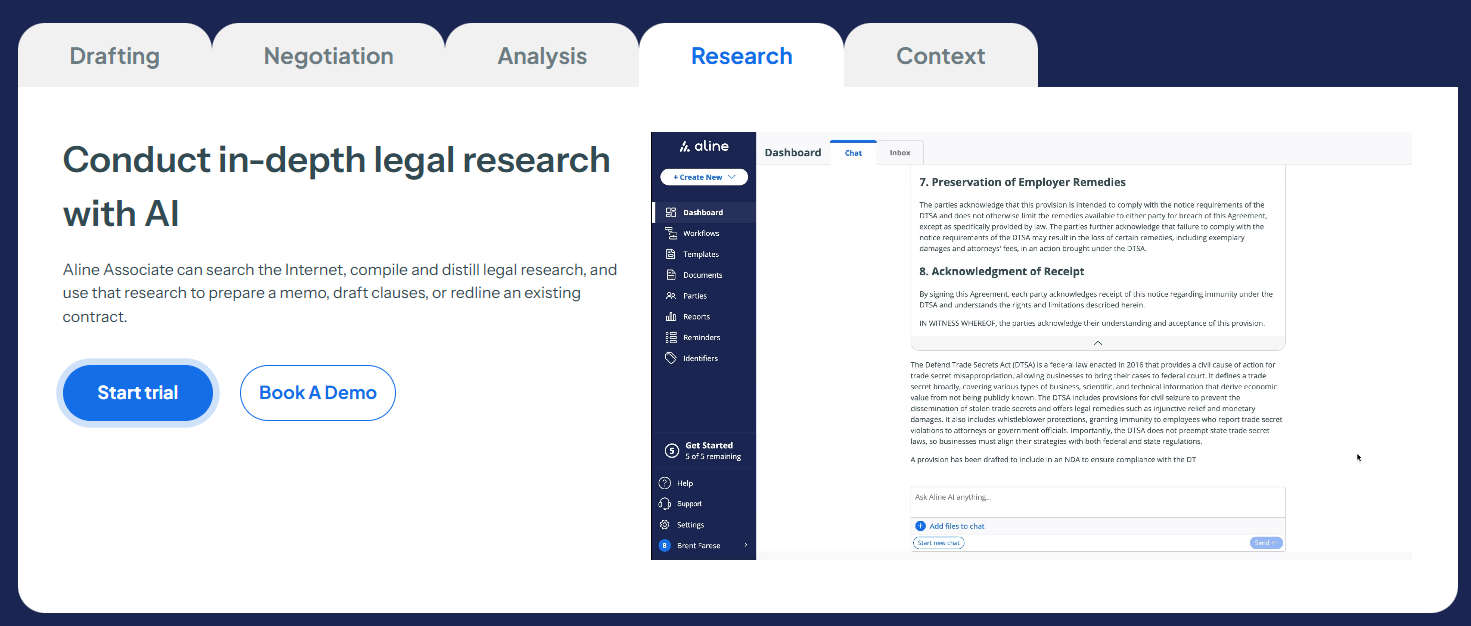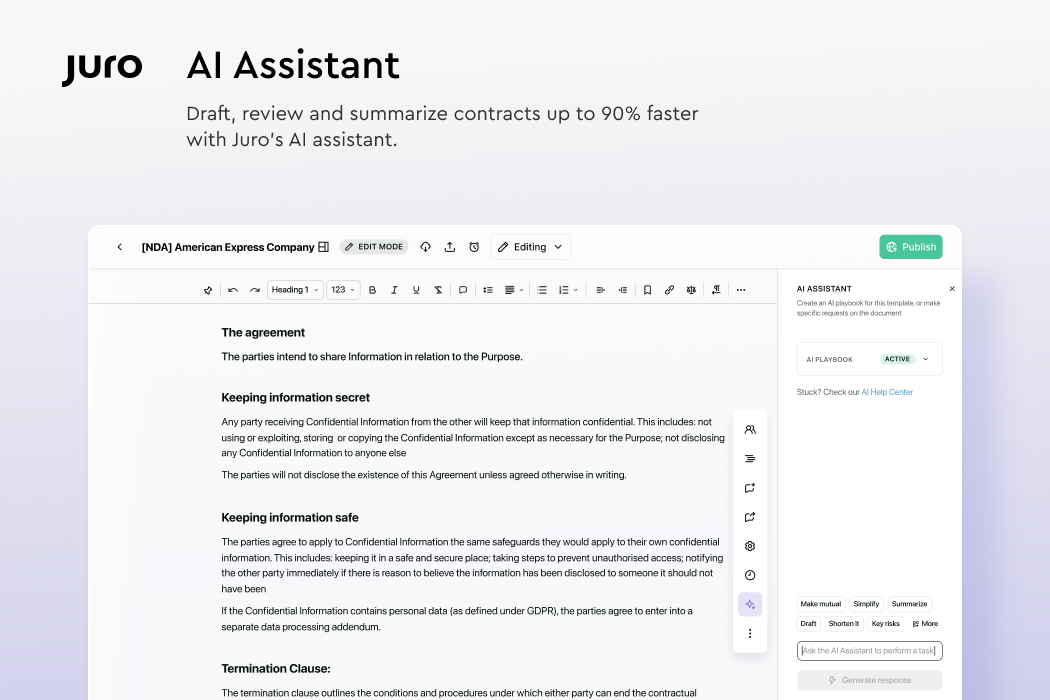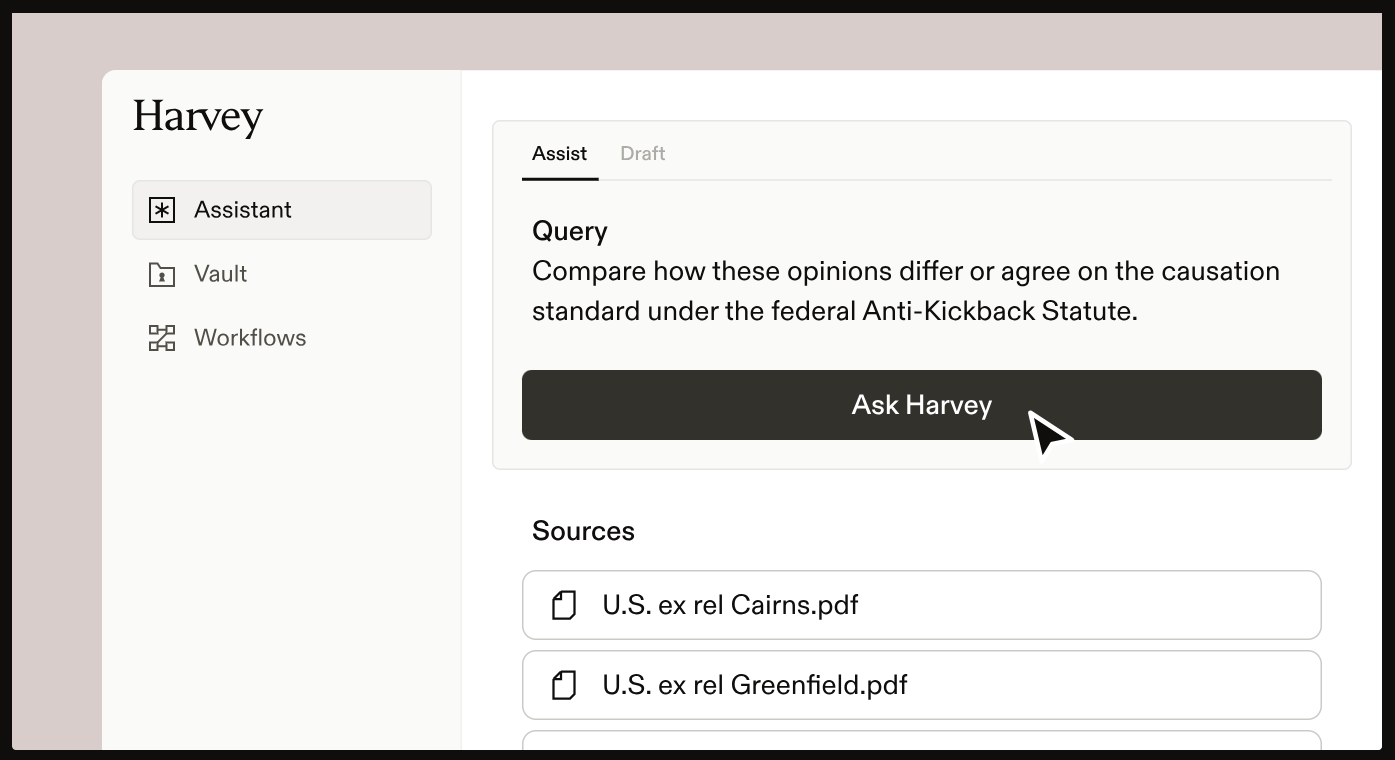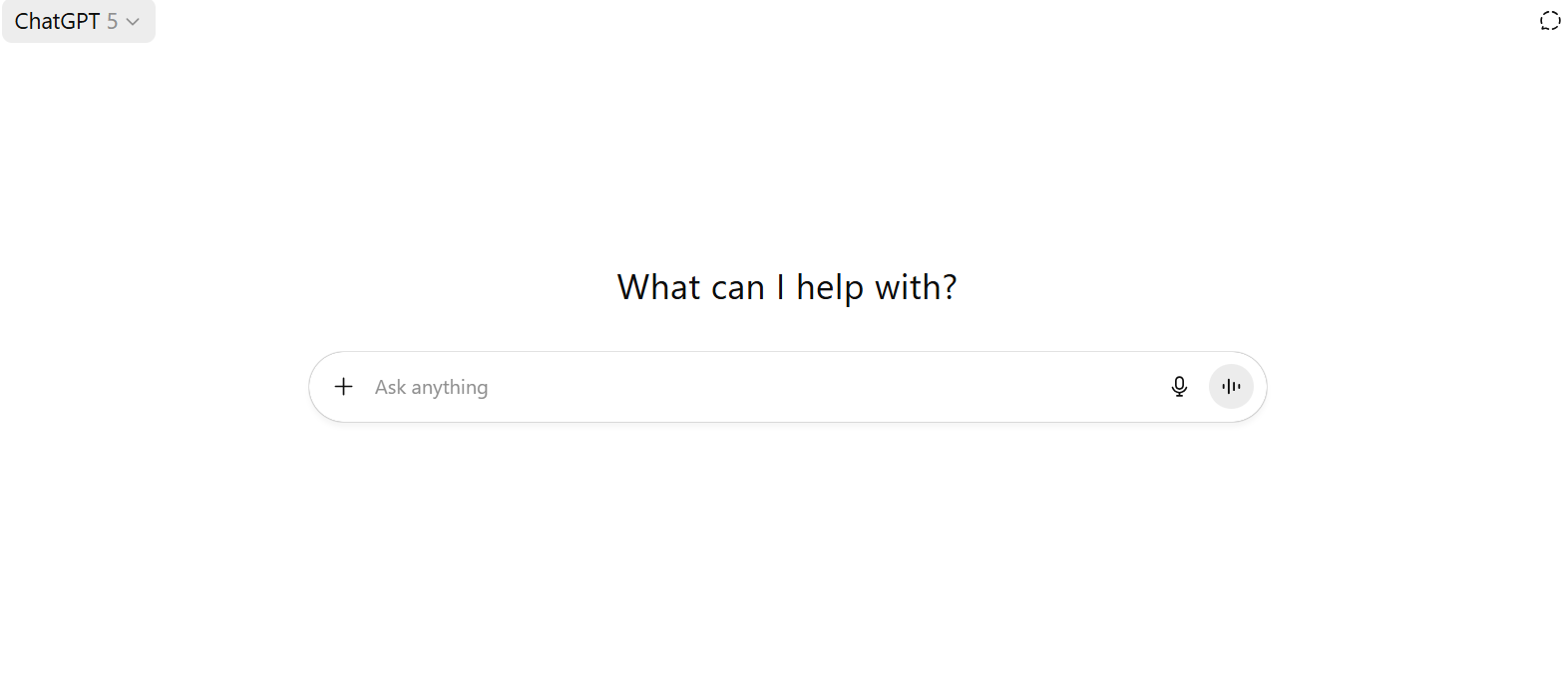Legal teams are under pressure to deliver faster results while keeping costs under control. Generative AI for legal is changing how this balance works.
Unlike general-purpose bots, legal chatbots are trained to manage real legal tasks and help with client intake, drafting, research, and so much more.
The impact is clear. Routine work that once demanded hours of manual effort can now be handled in minutes with AI-powered tools. That doesn’t replace lawyers, but it reshapes how legal departments and firms approach efficiency, service delivery, and client satisfaction.
In the sections ahead, we’ll explore how these chatbots work, the benefits they bring, and the platforms pushing legal tech forward.
A legal chatbot is different from the standard bots you see on shopping sites or customer support pages. Regular chatbots usually answer simple questions like “Where’s my order?” or “What’s your refund policy?”
In contrast, legal chatbots are AI-powered tools designed specifically for legal practice and day-to-day legal operations.
These bots act as legal AI tools that can manage tasks unique to the industry, such as document review, contract drafting, and client intake.
Plus, they’re trained to understand legal language and workflows, which makes them useful for firms, in-house departments, and even solo attorneys who want to deliver faster and more reliable legal services.
Here’s what makes legal chatbots stand out:
In short, legal chatbots aren’t just “digital receptionists.” They’re specialized assistants designed to lighten the load of legal professionals while keeping operations efficient.
Legal chatbots rely on artificial intelligence to process requests, understand context, and generate useful responses. Unlike regular bots that follow pre-set rules, these AI-powered chatbots use natural language processing (NLP) to read and respond in plain language.
The core of this legal tech is generative AI, which can draft contracts, summarize cases, or provide structured legal information in seconds. The system learns from vast datasets and legal materials, so it recognizes legal terms and understands how they apply in different situations.
A big advantage is their ability to handle repetitive work like automating client intake, which involves collecting client details and even generating first drafts of agreements.
While the chatbot handles the routine, lawyers step in with human expertise to review, refine, and make judgment calls.
In practice, legal AI chatbots work by:
This mix of machine speed and human oversight makes legal chatbots a powerful tool for modern legal teams.
Not every legal chatbot is built for the same job. Some are client-facing, while others sit in the background to support lawyers with daily work.
Thanks to large language models, they’ve become smarter and more adaptable, covering everything from research to automating routine tasks.
Here are a few of the main types you’ll come across:
Each of these serves a different purpose, but the goal is the same: to make legal work faster and less repetitive.
Ever feel buried in repetitive work? Legal chatbots can take on those routine tasks, support legal operations, and give clients faster responses.
Here are the main benefits you can expect:
Of course, this is one of the biggest benefits of using a legal chatbot. In the legal profession, hours disappear into repetitive work. All of this takes significant manual effort, and it often keeps lawyers from focusing on higher-level tasks.
With the help of machine learning, chatbots can take over these routine jobs. For instance, they quickly draft documents, handle client intake, and pull up relevant legal information in seconds.
And for a legal department managing multiple cases or contract reviews, that speed can change the entire workflow.
Instead of getting buried in admin work, lawyers gain back valuable hours to spend on strategy, negotiations, or advocacy, which are the parts of the job that truly need human expertise.
Many legal tasks that eat up budgets are actually time-consuming tasks like contract review or pulling together background research. When these jobs are handed over to AI, firms and in-house teams cut down on billable hours wasted on admin.
For example, think about service delivery in a small firm handling dozens of new client matters each month. Rather than paying staff to manually gather information and draft routine agreements, a chatbot can handle the first steps.
Lawyers then step in only when their expertise is needed, which keeps costs under control without lowering quality.
In the bigger picture, legal departments see the same effect: less money spent on repetitive processes, more resources available for strategic projects. Chatbots help make legal budgets stretch further while improving overall efficiency.
In the legal industry, first impressions are everything. Potential clients expect quick replies, and studies show over 80% consider “immediate” to mean within one to two hours. Lawyers, on the other hand, usually take twice that long, which leaves a gap in client expectations.
AI chatbots for law help close that gap. They can respond instantly, gather client details, and share basic info right away. This makes clients feel heard while giving attorneys organized data to review later.
The result is a smoother intake process that keeps clients engaged and frees lawyers to focus on real legal tasks.
A legal chatbot also strengthens the way a firm operates each day. These AI tools give consistent support to lawyers and legal assistants, which improves both workflow and client experience.
Some of the biggest contributions include:
This steady support keeps practices more organized and responsive. Teams gain extra breathing room, and clients see faster, more reliable service from the first interaction.
The idea of chatbots replacing human lawyers often comes up, but in reality, they won’t.
Chatbots are helpful for things like answering common legal questions, drafting standard documents, and handling routine tasks. Still, they can’t match the judgment, strategy, and advocacy that lawyers bring to the table.
In the legal landscape, chatbots are best seen as assistants that support professionals rather than replacements. They speed up research, organize data, and improve communication, but the final say rests with lawyers who understand context and nuance.
There are also ethical considerations. AI can provide information, but offering legal advice without proper oversight can create risks. For that reason, chatbots will continue to play a supporting role, while lawyers remain central to delivering sound legal services.
Legal chatbots aren’t all the same. Some focus on contracts, others on research, and a few cover general client support. Choosing the right one depends on the needs of your team, whether it’s drafting, intake, or case analysis.
Let’s look at some of the top options making an impact in the legal field today.
Aline Associate is the dedicated AI agent built into the broader Aline platform, which combines drafting, workflows, e-signatures, and AI Repository.
Rather than functioning as a stand-alone chatbot, Aline Associate integrates directly with your contract lifecycle, making it a natural fit for busy in-house teams and legal departments.

Think of it as an always-available junior associate that can draft, redline, analyze, and research in real time.
What sets it apart is how deeply it connects with the rest of Aline—draft a contract with AI, route it through workflows, get it signed with AlineSign, and then store it in the Repository for instant insights.
Essentially, it’s an end-to-end solution that cuts down on repetitive tasks while giving lawyers more space for strategy and decision-making.
Aline Associate doesn’t just add AI to legal work. It embeds it into the entire contract process. The result is faster reviews, stronger consistency, and measurable time savings across the whole legal workflow.
Juro is a contract-focused legal software platform built to help businesses handle agreements more easily. The idea is simple: make contracts clear and cut down on legal jargon so people outside the legal team can follow along without confusion.

Its chatbot works inside the platform, giving users a way to draft and review contracts without jumping between apps. Juro also connects with tools many teams already use, which keeps contract work tied into everyday business processes.
Casetext’s CoCounsel is an AI-powered virtual assistant built for lawyers. It focuses on research, drafting, and analysis, which makes it popular with firms that deal with heavy case work.

Unlike chatbots that only follow predefined rules, CoCounsel uses advanced AI to answer complex questions and assist with legal writing.
The tool is designed to feel like a junior associate, which should be fast with research, quick at pulling case law, and reliable for first drafts. Since its acquisition by Thomson Reuters, it’s become more widely used in litigation and research-heavy practices.
Harvey AI is another legal-focused platform that uses large language models to support daily work. It’s designed to assist lawyers with contract review, compliance checks, and research across a variety of legal matters.
Rather than replacing workflows, Harvey connects with existing tools so teams can add AI without disrupting their current systems.

One of its strengths is giving quick answers to research questions and drafting requests, which saves time on the first pass of a document. Harvey also emphasizes responsible use of client data, offering privacy safeguards to make sure sensitive information stays protected.
ChatGPT isn’t built specifically for lawyers, but many in the legal field still use it as a flexible assistant. It can draft letters, summarize rulings, or generate FAQs for clients in a matter of seconds.

Because it’s not tied to strict predefined rules, it can respond to a wide variety of prompts, though lawyers still need to review outputs carefully.
For legal teams, ChatGPT often works as a starting point rather than a finished product. It helps cut down the time spent on routine drafting and can enhance access to information by turning complex text into plain language.
Juro, Casetext, Harvey AI, and ChatGPT each offer value, but they’re built with narrower goals in mind.

Aline Associate brings everything together. As part of the full Aline platform, it connects drafting, redlining, e-signatures, and contract storage in one place. With features like AI Playbooks and the new AI Repository, it helps teams cut down repetitive work and stay consistent across every contract.
If you want to see how it fits into your workflow, give Aline a try and experience what it’s like to have an AI associate working alongside your team.
Both can be useful, but they serve different needs. ChatGPT is flexible and widely adopted, while Claude focuses more on context and safer outputs. For law firms, the better option depends on how you plan to use them and how comfortable you are with handling sensitive legal data.
Yes. Tools like Aline Associate, Harvey AI, and CoCounsel apply similar technology but are designed specifically for legal work. These platforms focus on tasks such as reviewing key clauses, analyzing contracts, and supporting legal research.
Absolutely. AI tools built for the legal profession now help reduce operational costs, improve drafting, and support research. They’re not a replacement for lawyers but a way to lighten workloads and give teams more time for complex matters.
No. ChatGPT and similar tools can improve efficiency and even boost client satisfaction by providing quicker responses, but they lack the judgment and strategy that lawyers bring. Ethical and data security considerations also limit their role. At best, they work alongside attorneys, not in place of them.

